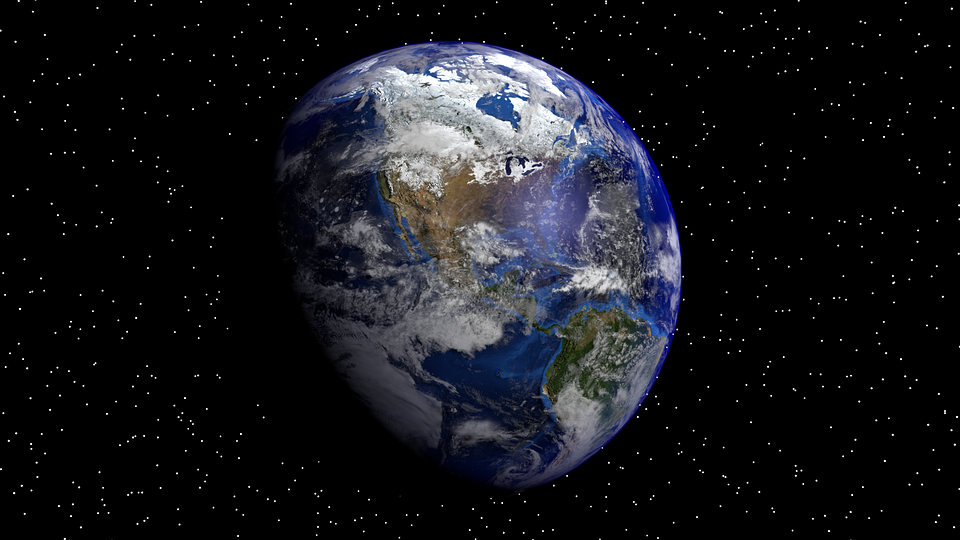Carbon Dioxide Saturation in the Atmosphere
Carbon dioxide saturation in the atmosphere is the theory that the carbon dioxide levels in the atmosphere have already reached the point that no more energy can be absorbed by the atmosphere. I read several papers intended to discredit this idea. Typically the articles conceded the fact that all the energy that could be absorbed was absorbed. The disagreement comes in the form of what the impact of increasing the carbon dioxide levels.
First, let me try to explain how energy is absorbed in the planet and atmosphere. Solar energy comes from the sun in the form of electromagnetic radiation. Different wavelengths of radiation in sunlight account for the different colors we see as well as the ones we can't see like X-rays and ultraviolet rays. As the sunlight comes into the atmosphere some is immediately reflected back into space, some is scattered by the atmosphere, some is absorbed, and some reaches the planet's surface.
Once the radiation reaches the earth's surface we have the same phenomenon of some of radiation being reflected and some absorbed. The reflected energy results in us being able to see objects and the different wavelengths give us the various colors. Some of this reflected energy goes directly back into space having no interaction with the planet. This reflection is called the albedo of the planet and the typical value is 0.3 (indicating that 30% of the incoming energy is reflected).
Some of the energy is absorbed. The energy absorbed is quickly emitted back away from the planet. Energy emitted from an object is dependent on the object's temperature. The sun being very hot emits short wavelength energy in the range of the visible portion of light. Cooler objects emit energy with much longer wavelengths that can't be seen, think of an infrared heater.
Now, some of the energy starts to make its way back to space. Air, being composed of simple molecules, can only absorb energy on certain wavelengths. Some of the wavelengths pass back through the atmosphere and never get absorbed again or scattered while other wavelengths are absorbed and re-emitted over and over again. Computer models for analyzing global warming divide the atmosphere into layers, stacking one layer on top of another. As the energy passes through each layer, it may be scattered in some random direction, it may be absorbed, or it may just pass through. Think of scattering as collisions of billiard balls. The amount of energy absorbed in each layer is dependent on the density of the gas and what the gas is, remember gases only absorb energy in certain wavelengths.
The energy from each layer that is either scattered or emitted may go back toward the planet or up toward space. By stacking layer after layer of atmosphere and analyzing the energy into and out of each layer, the temperature of the planet and each layer can be determined. These models are then used to determine the impact of carbon dioxide on the atmosphere.
For carbon dioxide saturation, the articles I read conceded the fact that all the energy that could be absorbed was already being absorbed. The issue is that with higher levels of carbon dioxide, energy will be trapped at lower layers instead of making its way back into space. The layers in the analysis become something similar to insulation or blankets on a bed. Trapping the energy at lower levels will heat up the planet near the surface while upper layers of the atmosphere will be colder.
The problem I see is these scientist are putting too much faith in their models and not recognizing the limitations of the assumptions that have been made in the analysis. The analysis of layers in the atmosphere relies on the energy being transferred by radiation alone and the layers are completely separate from each other. Again, think of these layers as blankets. In reality, if a layer at a lower lever gets hot, the hot air is going to rise and mix with the layer above. So even though the energy will be trapped at lower levels, common sense tells us the layers will mix in an upward direction.
Throughout my career, I worked with engineers from many different fields. Many times I noticed that these engineers needed to temper their education with a little common sense.
Related posts:
Man Made Global Warming
Are Plants Starving for Carbon Dioxide
Greenhouse Effect
